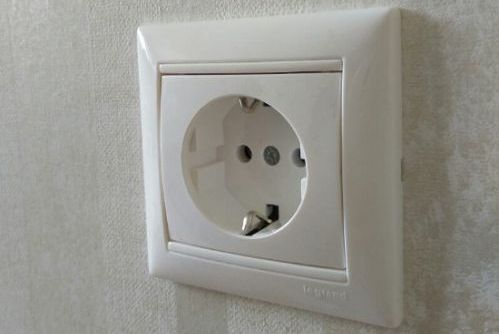Categories: Sockets and switches
Number of views: 17418
Comments on the article: 0
Why does the plug spark in the outlet when turning the circuit on and off
Why does the plug spark in the socket when turning the load on and off, sometimes even when the plug is plugged in and is held stationary in the socket? Have you ever asked such a question, did this happen to you? But this is not an idle question, and it would be good to find and eliminate the reason before it comes to the fire.
Meanwhile, the cause of the sparking is by no means obvious, although in principle there are few options: it can either be a loose fit of the plug pins to the socket, or the contacts or wires inside the socket may at some point not be able to conduct the operating current of the device normally, and it turns out overload of one of the contact joints by current, which is ultimately accompanied by sparking.

Poor contact with the plug
What could result in poor contact between the pins and the outlet? Contact clamps are installed inside the outlet, they can diverge greatly over time and become unable to tighten the plug pins. The plug, for its part, may have a standard with narrow pins that do not match the diameter of your Euro outlet and do not fit well into it.
In both cases, an overcurrent occurs in the place of weak contact of the pins, which overheats, sparks, and in the worst case scenario can cause a fire.
In this case, it will be useful to tighten the contact clamps of the socket, having previously de-energized the wiring of the room, or change the plug to the one whose pins become sufficiently tightly in contact with the clamps inside the socket.
The essence of the problem is that the higher the load current, and the smaller the cross section of the conductor, the more the conductor heats up, this is known from the course of physics. And if you let a large current through a thin conductor, then, of course, it will overheat.
Similar situation with a place of poor contact inside the outlet, which essentially becomes a weak link, and takes on the shock of current overload - in the end it looks like the outlet sparks.

Violation of the wiring inside the outlet
Current overload can be caused by another reason, when the symptoms look the same as with a bad contact of the plug, but pinching the contacts does not help to solve the problem. Here the matter is in the wiring wires, or more precisely - in the places where these wires contact the outlet.
A burnt or broken wire that is already held in the clamp with a small tip and is about to fall off (a very small cross-sectional area already falls on it) or an oxidized compound (characterized by high resistance at the contact point) are the two remaining reasons that cause current overload in the outlet, accompanied by sparking.
In this case, it is necessary to replace the contact connection of the wiring with the socket - update the wire, strip the contact area from oxides, and fix the clamping screws again.
And in the end, make sure that so many devices are not connected to the outlet through an extension cord with many outlets, into which you sometimes want to connect everything that is possible.
The extension cord then looks reliable, but inside the outlet there is already a problem that needs to be fixed. Try to never exceed the maximum allowable power for the wall outlet.
The load is to blame
Sometimes, only at the moment the device is connected to the outlet, a tiny but loud spark jumps between the outlet and the plug, which can confuse someone. For example, at the moment of sticking the plug of the laptop charger or plug power supply for leds.
In these cases, the spark is practically explained by the input circuit of the connected load.At the input, they have a rectifier and a filter capacitor, from which a high-frequency pulse converter is fed with a constant voltage (approximately 310-340 volts at the peak).
So, the peak current at the time of charging through the rectifier from the network of the empty input capacitor is very high, it reaches tens of amperes, and the built-in “starting current” limiter (often with a thermistor alone) is simply not able to completely rid the circuit of the current surge at the moment of sticking forks. If you do not want to experience discomfort every time you plug in the plug, use an adapter (extension cord) with a switch button.
See also at bgv.electricianexp.com
:
